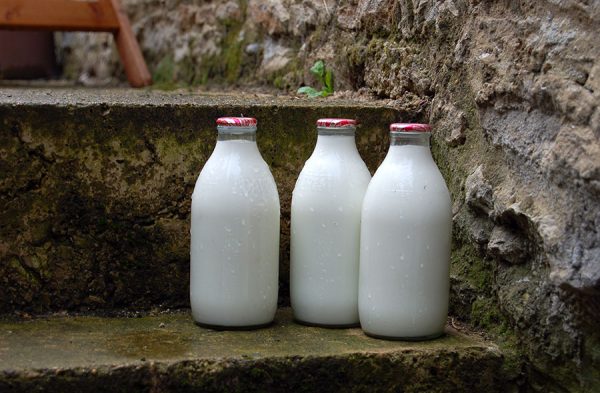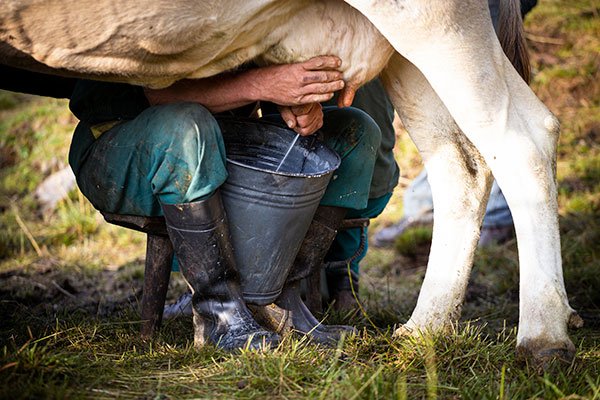‘Latte’ seems like a fairly simple Italian word, but there’s a lot more to it than meets the eye…

Latte (pl. latti) meaning ‘milk’.
In English, we understand it to mean a delicious steamy coffee, but in Italian ‘latte‘ simply means ‘milk’. So, to avoid being handed a glass of the white stuff, ensure you order a ‘latte macchiato’ when you’re visiting a caffè in Italy.
The word ‘latte‘ doesn’t only refer to cow’s milk, it can also refer to milk that doesn’t come from animals. For example, you could ask for latte di mandorle (almond milk), latte di soia (soy milk), or latte di cocco (coconut milk) in your drink.
It can also mean ‘dairy’ in general, with latticini referring to the food group or dairy products as a whole and lattiero referring to dairy farms or the production of dairy products.
As in English, the Italian word for milk can also be used to refer to things that are ‘milky’.
For things that are white, or creamy in appearance (for example, skin colour) use ‘latteo‘. Meanwhile, things that are also milky in consistency (like pasta water) would be described as ‘lattiginoso‘.
Italian ‘latte‘ idioms
We all know the common English phrase ‘to cry over spilled milk’, but did you know the same also exists in Italian?
Just like its English counterpart, the Italian phrase ‘piangere sul latte versato‘ is taken to mean that it does not help to be upset over something that cannot be changed.
Another Italian idiom involving milk does not exist in English…

The phrase ‘far venire il latte alle ginocchia’, literally meaning ‘to make milk come to the knees’ comes from the ancient technique of milking cows.
This traditional method of sitting by the cow, and expressing milk by hand into a bucket is a long and tedious tedious job in which one must work at length to fill the bucket to knee level.
Hence, the phrase ‘far venire il latte alle ginocchia’ refers to something that is extremely boring.
Learn more Italian words by browsing our archives
Images: Getty Images
